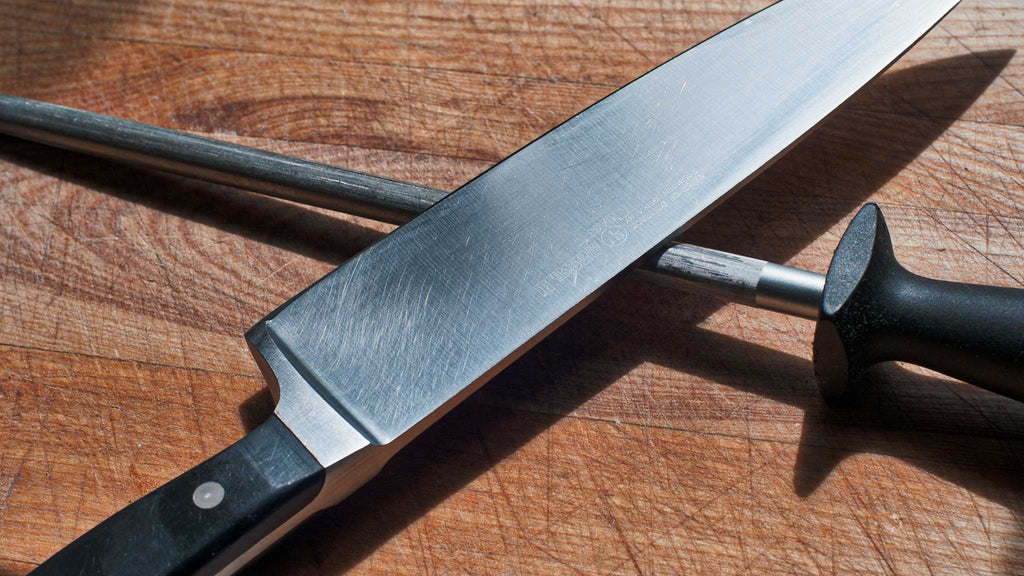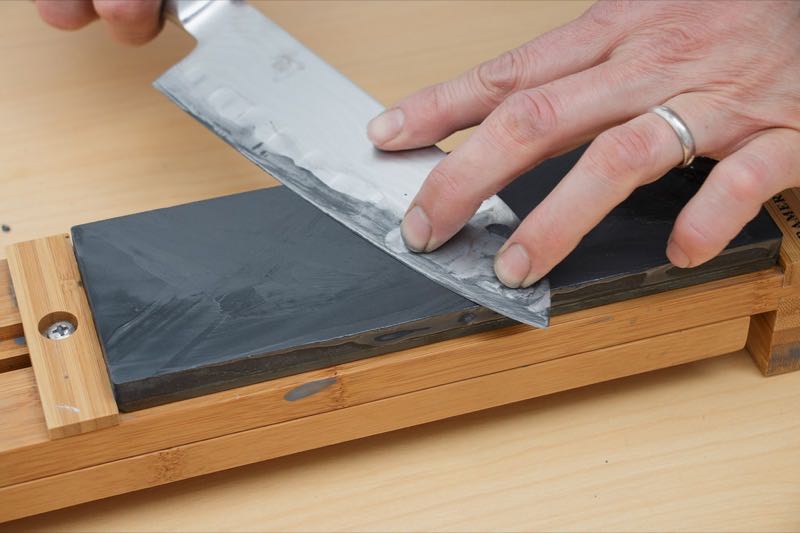 For years, the conventional wisdom in the knife sharpening community has been that electric sharpeners are inherently inferior to manual sharpening methods. The common perception is that these automated tools are incapable of delivering the same level of precision, control, and care that a skilled human sharpener can provide.
For years, the conventional wisdom in the knife sharpening community has been that electric sharpeners are inherently inferior to manual sharpening methods. The common perception is that these automated tools are incapable of delivering the same level of precision, control, and care that a skilled human sharpener can provide.
However, is this reputation truly deserved?In this article, we’re going to explore the pros and cons of electric knife sharpeners, challenging the notion that they are always the inferior choice. We’ll delve into the nuances of sharpening technique and discuss how electric sharpeners can be used effectively when done right. By the end, you’ll have a more balanced perspective on this controversial topic and be equipped with tips to identify and use quality electric sharpeners.
The Pros of Electric Knife Sharpeners
One of the primary advantages of electric knife sharpeners is their sheer convenience and time-saving capabilities. With the push of a button, these tools can quickly and easily restore the edge on dull knives, making the sharpening process a breeze. This is particularly appealing for busy home cooks or DIYers who don’t have the time or patience for manual sharpeningElectric sharpeners also tend to deliver more consistent results compared to manual methods. Many models are designed to maintain a precise sharpening angle, ensuring that each pass of the blade results in a consistently sharp edge. This can be especially beneficial for users who lack the experience or dexterity required for freehand sharpening. Another significant pro of electric sharpeners is their accessibility and affordability.

These tools are widely available, both in-store and online, making professional-level sharpening services accessible to a much broader audience. This democratization of sharpening technology empowers home cooks, gardeners, and outdoor enthusiasts to take control of their blade maintenance without the need for specialized skills or expensive equipment. Furthermore, many electric sharpeners are designed to handle a wide range of blade types, from kitchen knives to outdoor tools like axes and pruners. This versatility allows users to maintain the sharp edge on all their essential cutting implements with a single, convenient tool.Finally, electric sharpeners are generally easier to use compared to manual sharpening. The automated process requires less skill and technique, making it a more approachable option for those who are new to the world of knife care and maintenance.
The Cons of Electric Knife Sharpeners
While electric sharpeners offer several advantages, they are not without their drawbacks. One of the primary concerns is the potential for blade damage. Improper use or low-quality electric sharpeners can lead to uneven or overly aggressive sharpening, which can ultimately harm the blade. This is a risk that users must be mindful of, as damaged knives can be difficult or even impossible to repair. Another potential downside of electric sharpeners is the limited control they offer compared to manual sharpening. When using a freehand sharpening method, users have more precise control over the angle and pressure applied to the blade, allowing for a more customized and nuanced sharpening experience.
This level of control can be harder to achieve with an automated tool.Additionally, some users argue that the automated nature of electric sharpeners can result in a loss of the unique “personality” of a hand-sharpened blade. The subtle variations and imperfections that can occur during manual sharpening are often seen as part of the charm and character of a well-maintained knife. Electric sharpeners also require regular maintenance to ensure optimal performance. The internal components and sharpening wheels need to be cleaned and replaced periodically, which can be an inconvenience for some users. Finally, the operation of electric sharpeners can be noisy and may cause vibrations, which some users find unpleasant or distracting during the sharpening process.
Nuances of Sharpening Technique
Regardless of the tool used, sharpening technique is of paramount importance when it comes to maintaining the optimal edge on a knife. This is true whether you’re using a manual sharpening stone or an electric sharpener. Proper technique involves patience, attention to detail, and a thorough understanding of blade geometry. Users must be mindful of the sharpening angle, the amount of pressure applied, and the number of passes required to achieve the desired edge. Rushing through the process or using excessive force can lead to uneven or damaged edges, regardless of the sharpening method.

By mastering the nuances of sharpening technique, users can mitigate many of the potential downsides associated with electric sharpeners. With the right approach, these automated tools can be used effectively to deliver consistently sharp and well-maintained blades.
Tips for Identifying and Using Quality Electric Sharpeners
Not all electric sharpeners are created equal, and it’s important to be able to recognize a well-designed and durable model. When shopping for an electric sharpener, look for features like adjustable sharpening angles, multiple sharpening stages (coarse and fine), and a sturdy, well-constructed housing. Once you’ve identified a quality electric sharpener, it’s crucial to follow the manufacturer’s instructions carefully. Maintain the correct sharpening angle, apply the right amount of pressure, and regularly clean the internal components to ensure optimal performance. Being attentive and patient during the sharpening process is key to achieving the best results.
In the end, the debate over electric versus manual knife sharpening is not a simple black-and-white issue. Both methods have their merits, and the “best” approach ultimately depends on the user’s preferences, skill level, and specific needs. By approaching this topic with an open mind and considering the nuances of sharpening technique, users can explore electric sharpeners as a viable option, while also acknowledging the value and charm of manual sharpening. Ultimately, the goal should be to maintain sharp, well-cared-for blades, regardless of the tool used. At Blade Butler, we pride ourselves on our expertise in all things knife sharpening. Whether you prefer manual or electric methods, we’re here to provide the knowledge and guidance you need to keep your blades in top condition.
Contact us today to learn more about our services and how we can help you achieve the perfect edge.

